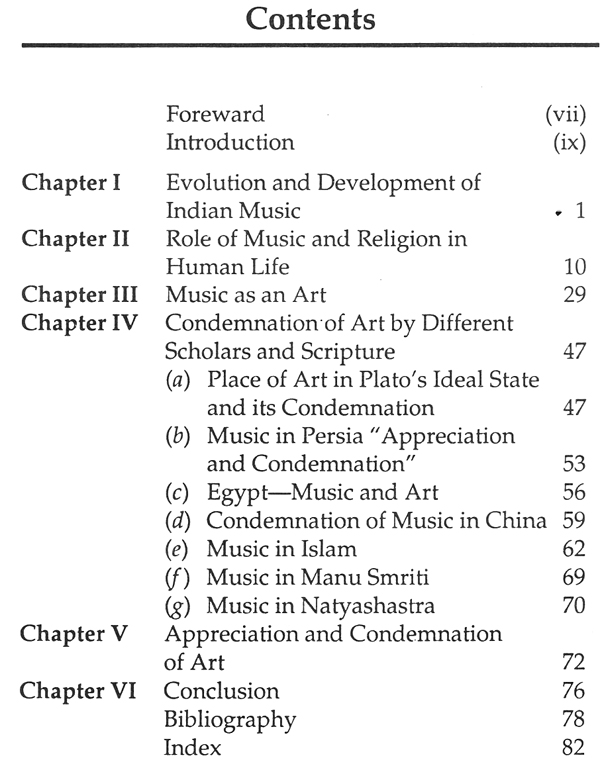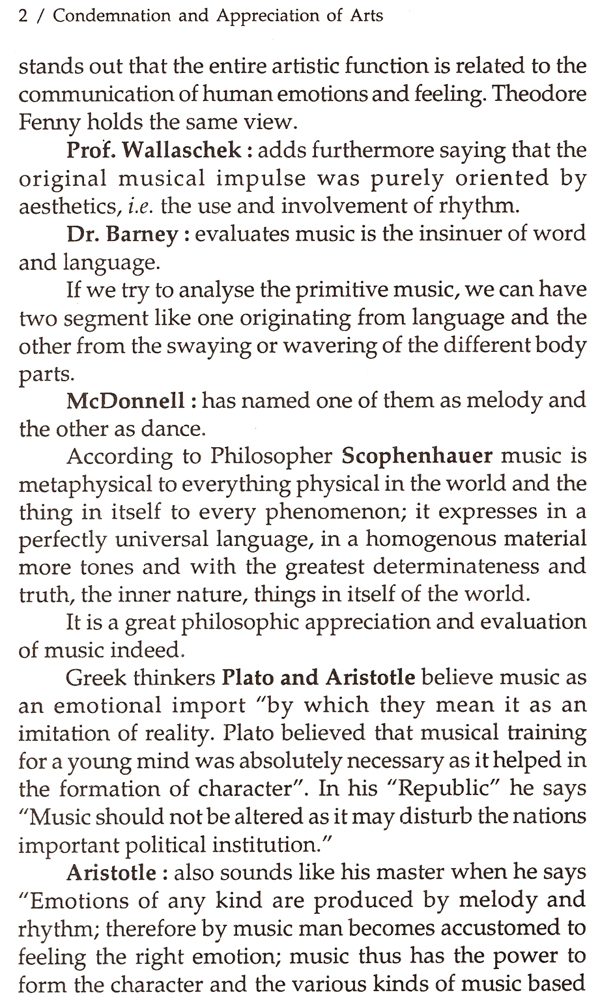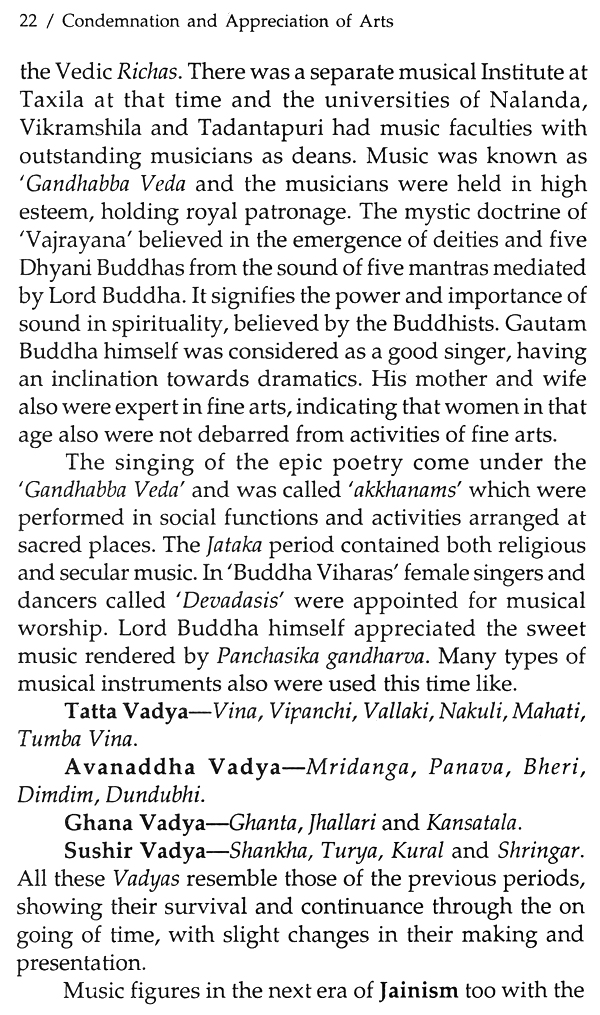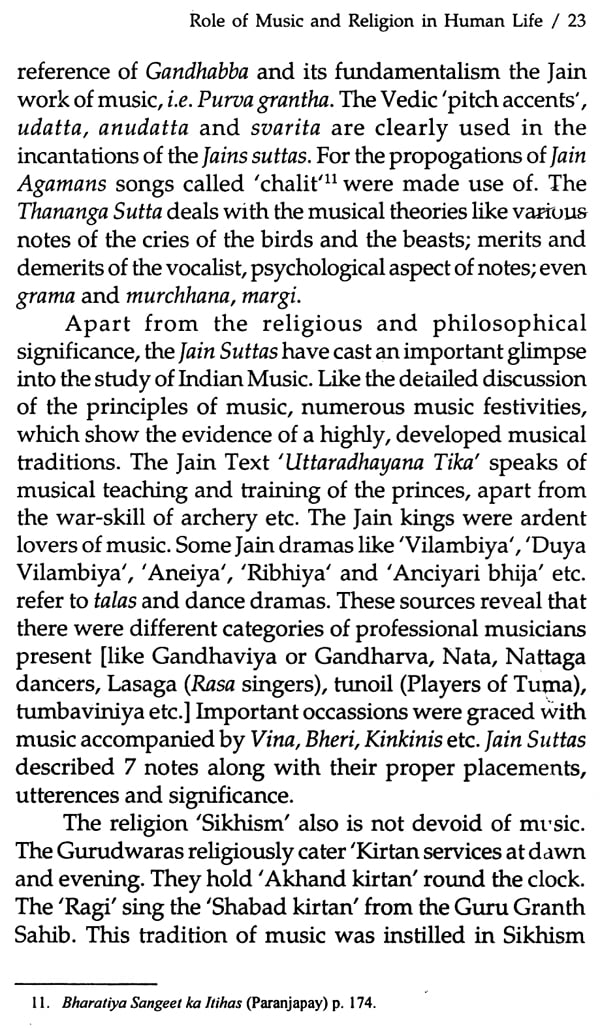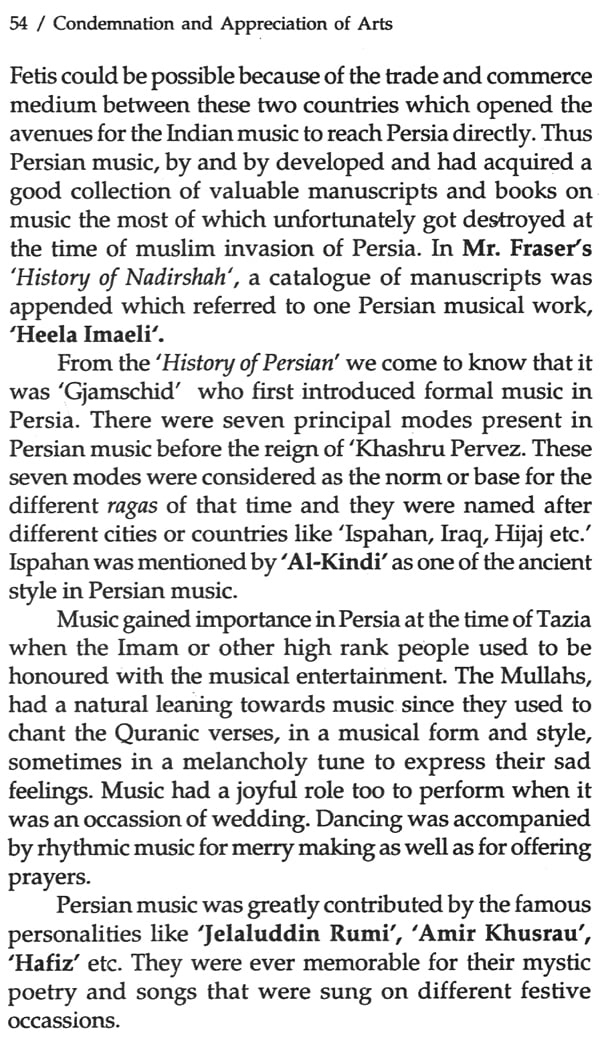
Condemnation and Appreciation of Arts
Book Specification
| Item Code: | NAU558 |
| Author: | Dr. Debashree Bhattacharya |
| Publisher: | Sanjay Prakashan |
| Language: | English |
| Edition: | 2009 |
| ISBN: | 9788174533302 |
| Pages: | 94 |
| Cover: | HARDCOVER |
| Other Details | 9.00 X 5.50 inch |
| Weight | 250 gm |
Book Description
The very utterance of the word `Art' invokes a subtle feeling of deep relief, tranquility, aesthetics, peace and divinity in human mind. Hence 'Art' needs to be valued, appreciated and studied with a psychological approach. It is very much subjective. It may open a passage to ecstasy for some people where as it is futile to spend time and energy for some. To some ears music is meaningless sound or noise and to some it is a realization of Truth beauty and divinity. Despite all these Art is not spared from criticism both positive and negative. Although art has been held in very high esteem all over the world in all times and ages, yet it had to face condemnation by some people in some certain times. But to understand why Art faced criticism we need to understand in what i.e. context and perspective criticism was done i.e. the political and economic situation of the country during a particular period compelled the rulers of that period to criticize or prohibit the practice of music. Thus we find that the criticism of art or its condemnation happened because of the situations prevailing during that period not music in general Or in other words we can say that music in general can't be condemned rather the situations prevailing in that period led to criticism.
Dr. Debashree Bhattacharya, is the student of Dr. (Mrs.) M. Vijay Lakshmi who was a Prof. of Faculty of Music and Fine Arts. Dr. Debashree holds a doctorate degree in Indian classical music from the University of Delhi. She started learning classical music at a tender age from different gurus and learnt not only various forms of music like light music, classical music, Rabindra Sangeet, Najrul giti but also arts, crafts and sculpture. She has given performances of music all over India and has even published a book titled "The Importance of Tone, Tune and Text in Indian Music." She has received many awards in music and Excellence Award 2005 from the 'lie Indian Society of Creative Arts.
Dr. Ms. Debashree Bhattacharya's utter dedication, hard work, perseverance and love for music have been instrumental in the creation of the book "Condemnation and Appreciation of Art". I believe that this book will provide not only answers to many musical queries, but insight too. She has really gone deep into her research work to trace and delve out the "Silk Route" of music from the ancient to the modern times with all its various flavours, colours, Chemistry and Grammer. This book is not only a narration or description of facts and figures, but also critical...spiced with Iter approach of evaluating music from two different angles-music as universally accepted, highly acclaimed and respected form of art and the other, as a condemned subject at certain times, affected by some specific socioeconomic and political factors. The authoress has dealt these two aspects with discretion and finally established music at its highest pinnacle of glory.
The very utterance of the word 'Art' invokes a subtle feeling of deep relief, tranquility, aesthetics, peace and divinity in human mind. Hence 'Art' needs to be valued, appreciated and studied with a psychological approach. It is very much something subjective. It may open a passage to ecstacy for some people whereas it is futile to some to spend time or energy on it. That is why some may be charmed and delighted to see the 'Venus' whereas to some people it is just a clay—model. So with music, which is a basic part and parcel of Art. To some ears music is a meaningless sound or noise, to some it is a realisation of truth, beauty and divinity. Thus, the appreciation or denunciations of Art is a much debated topic.
The field of Art is very vast with its various components of dance, drama, music (Vocal + Instrumental), painting, architecture, sculpture and so on. Indian Art believes in 64 different branches (64 Kalas) of which vocal music in particular and Instrument and dance in general are adjudged as the best since they immediately communicate with the listeners or the spectators. Art connotes the inner sensibility, emotions, feelings and instincts spontaneously. Again this may not happen with all. Some may prefer to remain blindfold, while some may perceive the beautiful world of eternal rainbow.
Art necessarily involves creativity with which were born even the primitive men. They loved to create artifacts like toys, animals jewellery with bones, stones, clay, ivory, wood which still carry their value, beauty, merit and importance. They are worthy heritage to human civilization even now. It may be so that they were not created for arts sake, but for their religious, ritualistic and funeral purposes, but no one can deny their artistic and aesthetic value till this date. They are a continuous process to link up the modern march and development of art through the passage of time. That is why they are eternal. This primitive art is thus a thorough fare to reach the going march of modern civilization, the ornamentation of which is art. The growth and glory of a nation are inseparably compiled with the richness of its art.
**Contents and Sample Pages**
